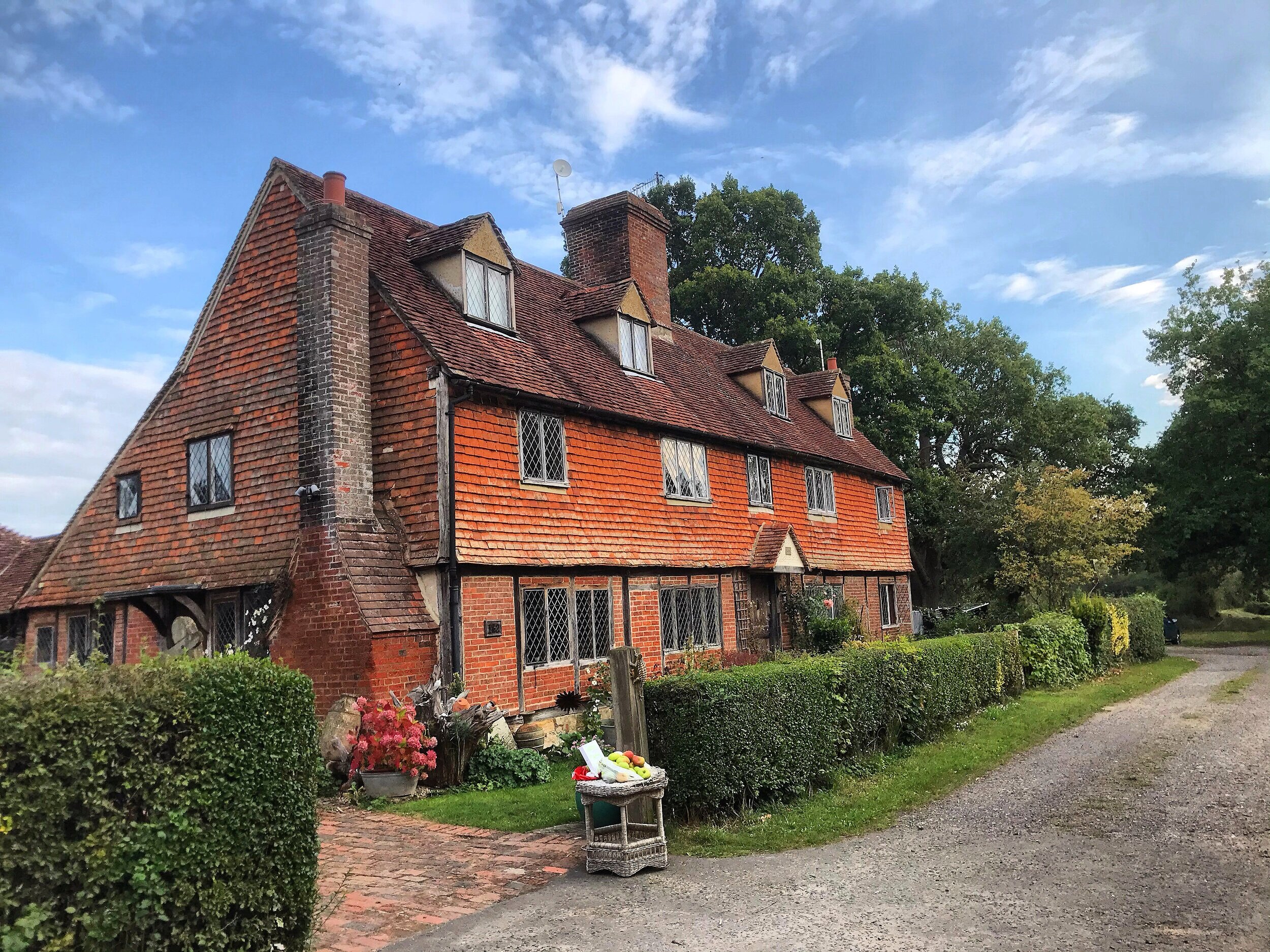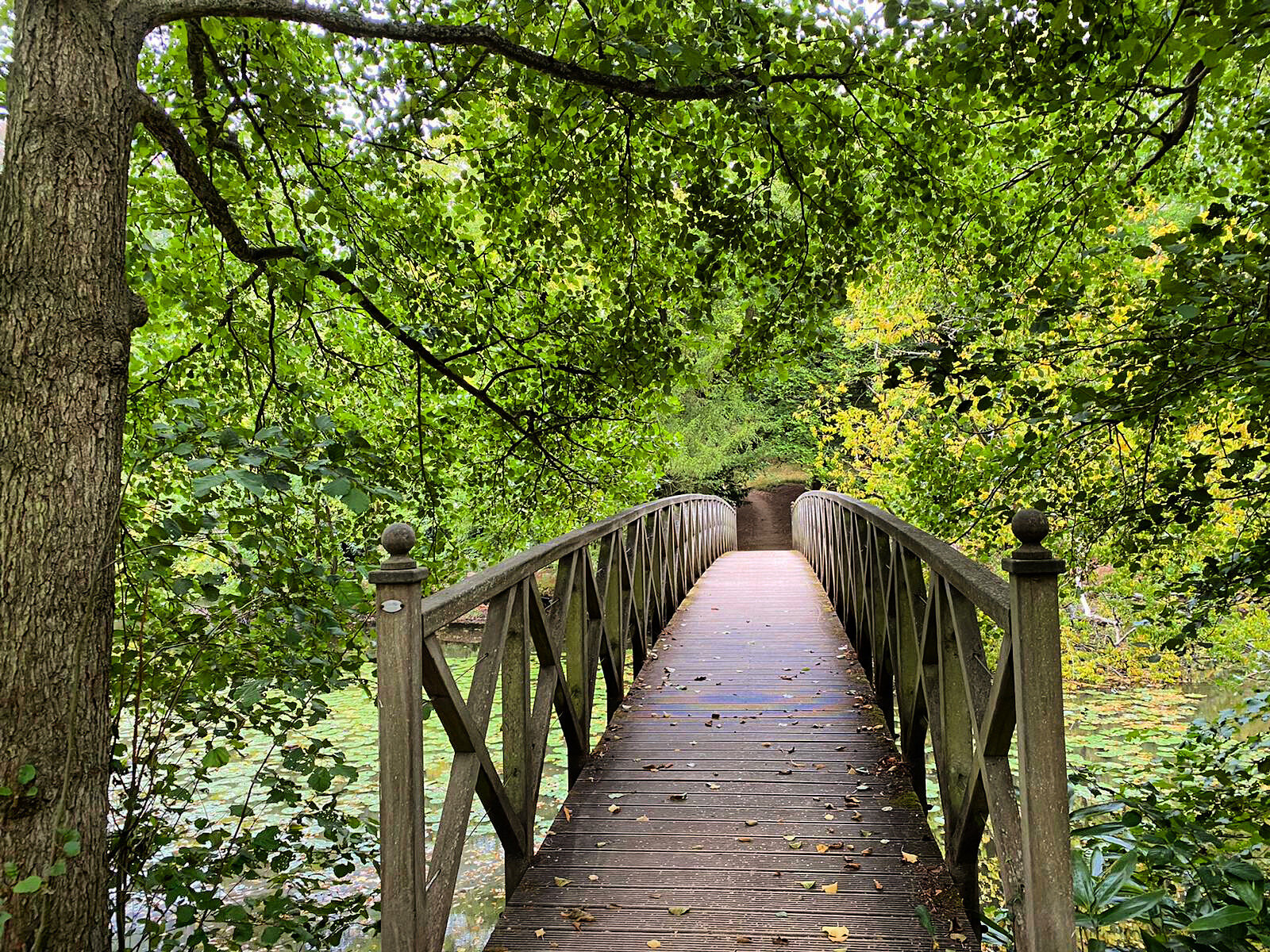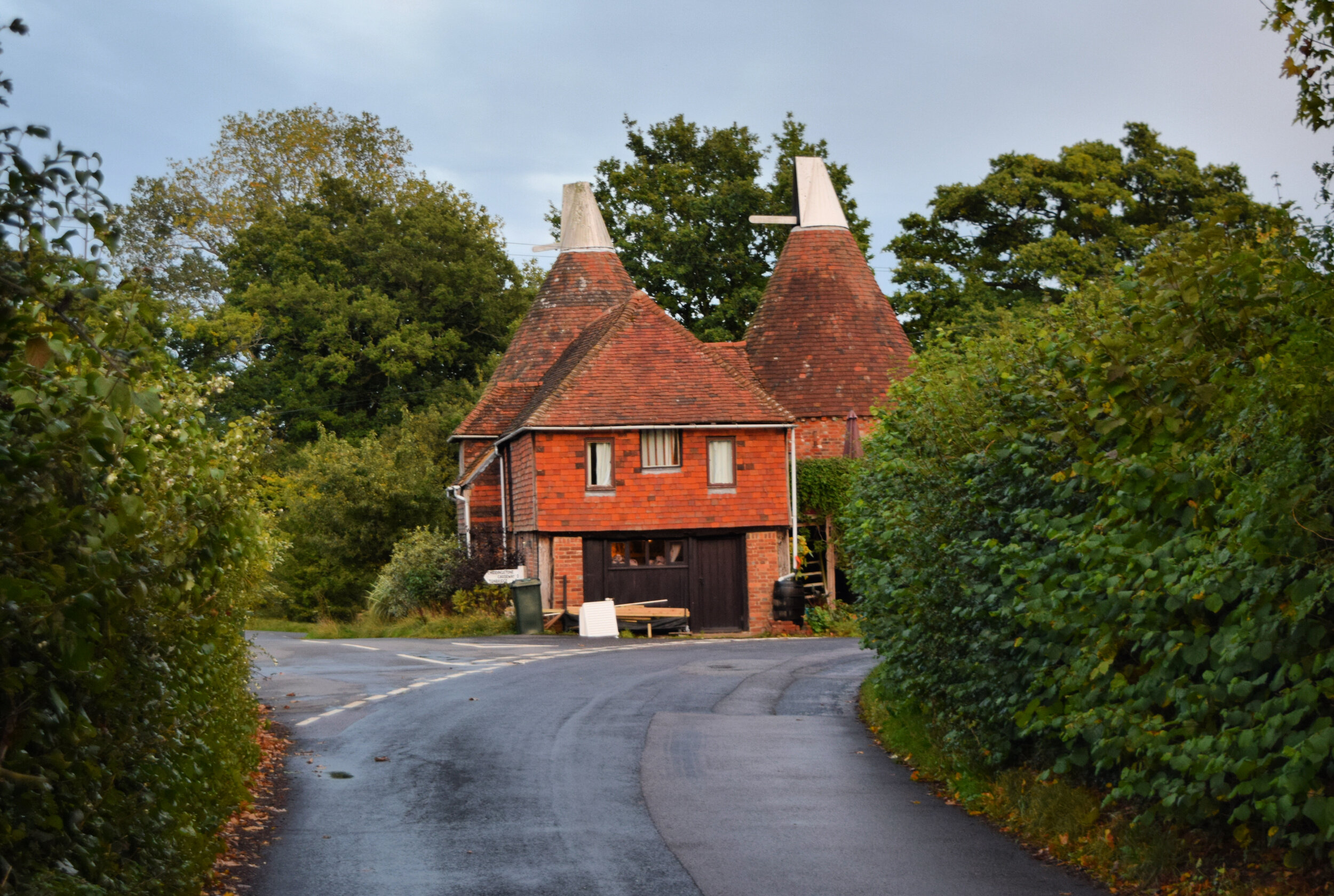Walk 15: The Castle On The Hill
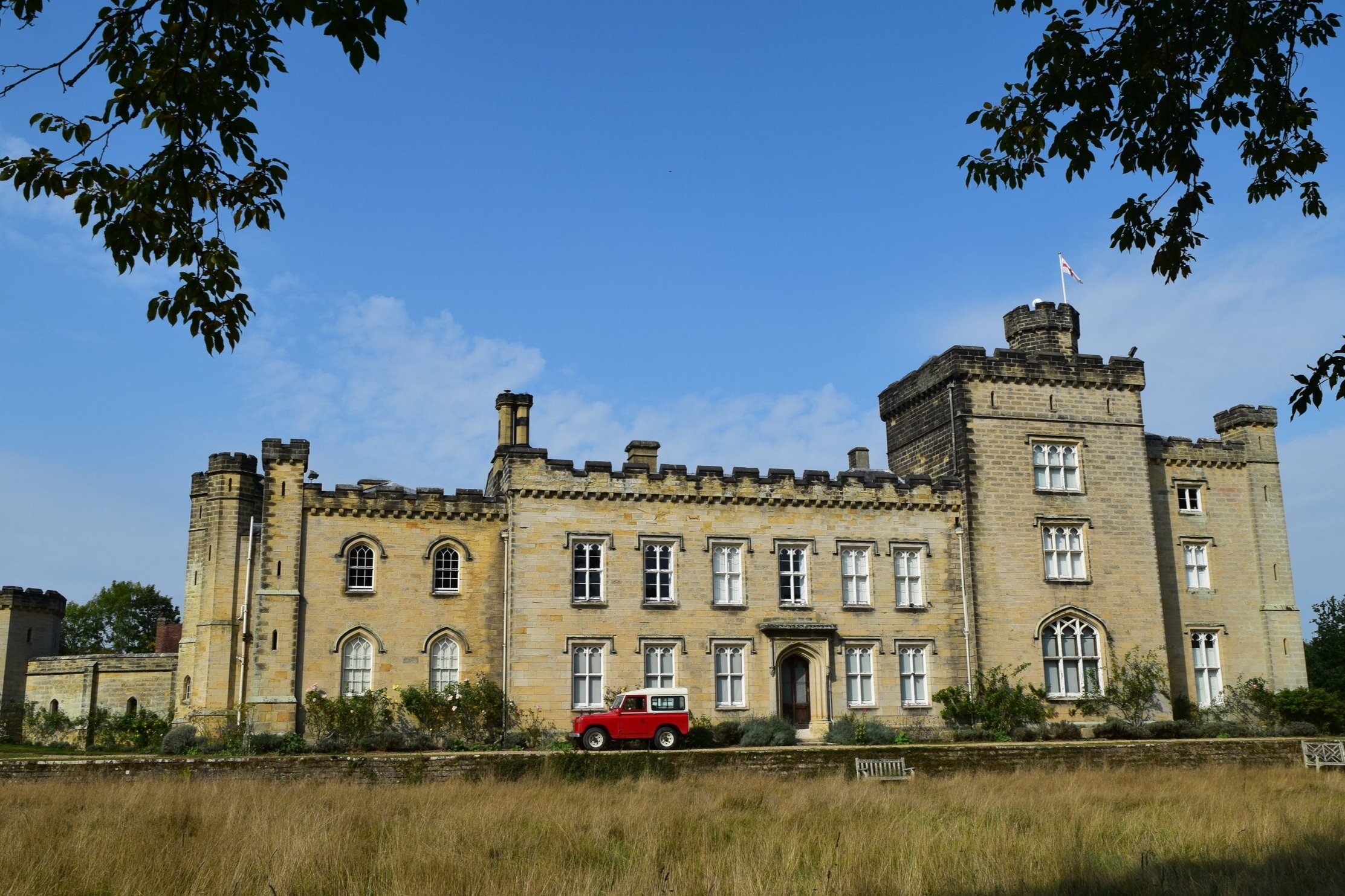
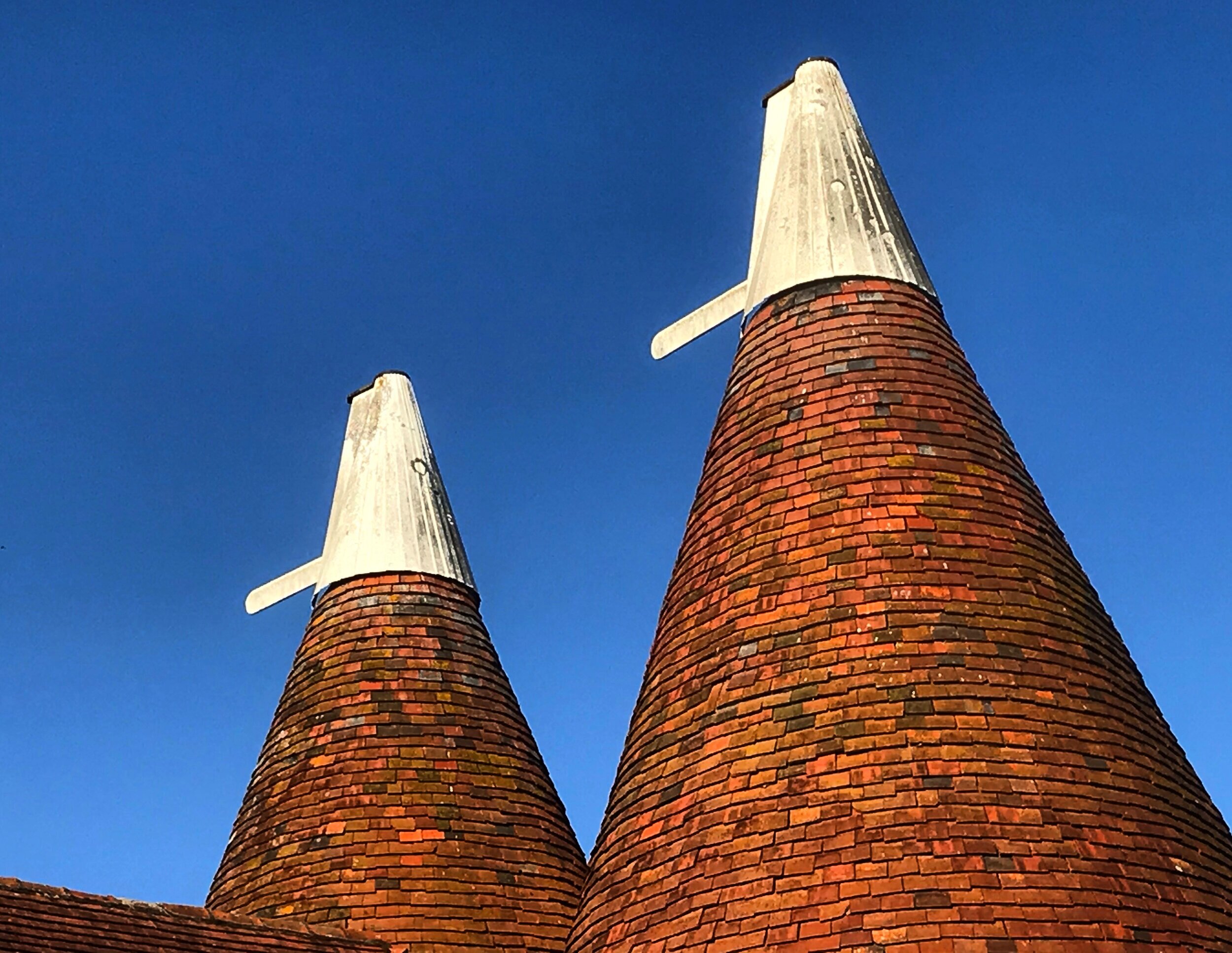
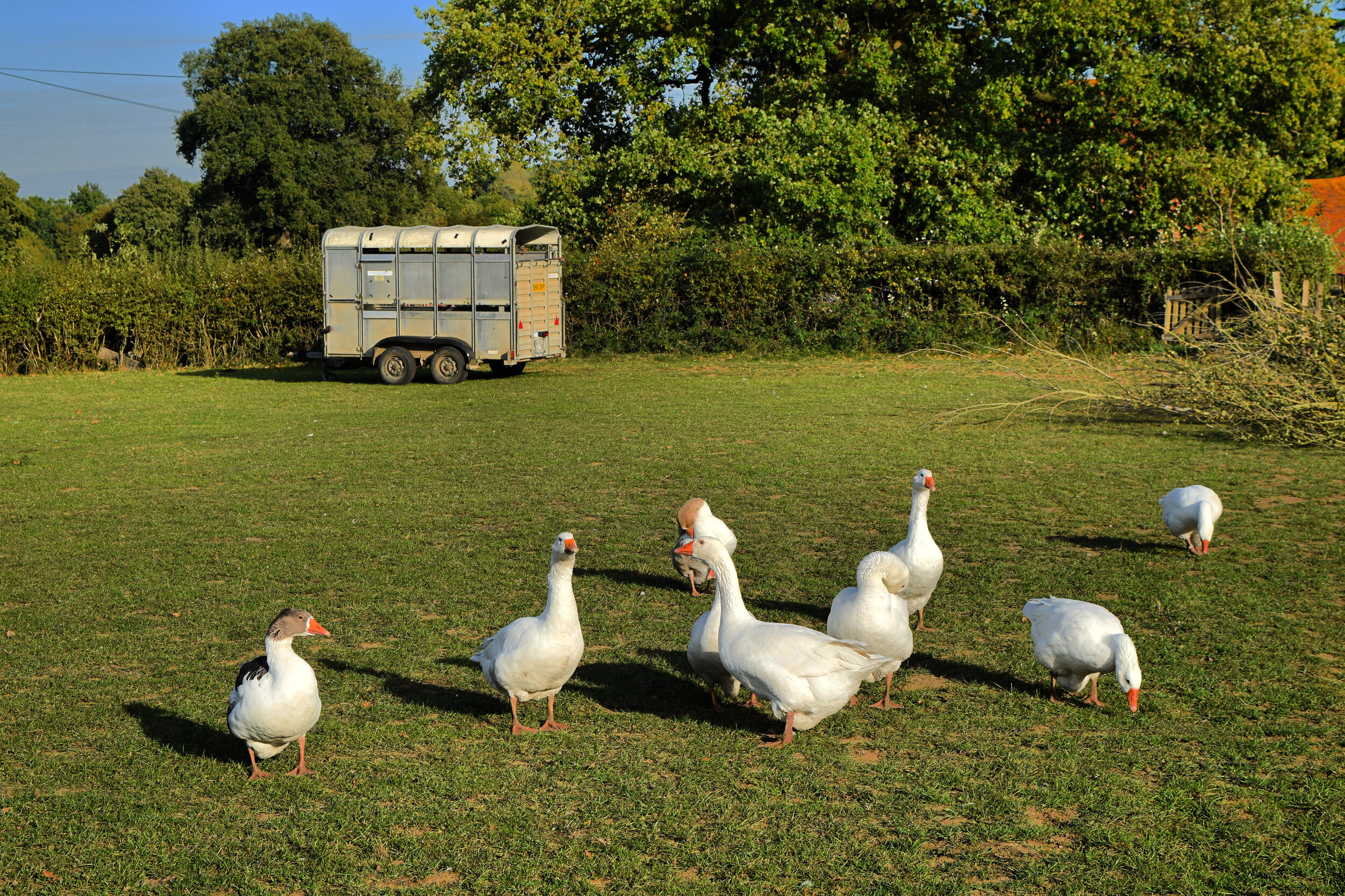

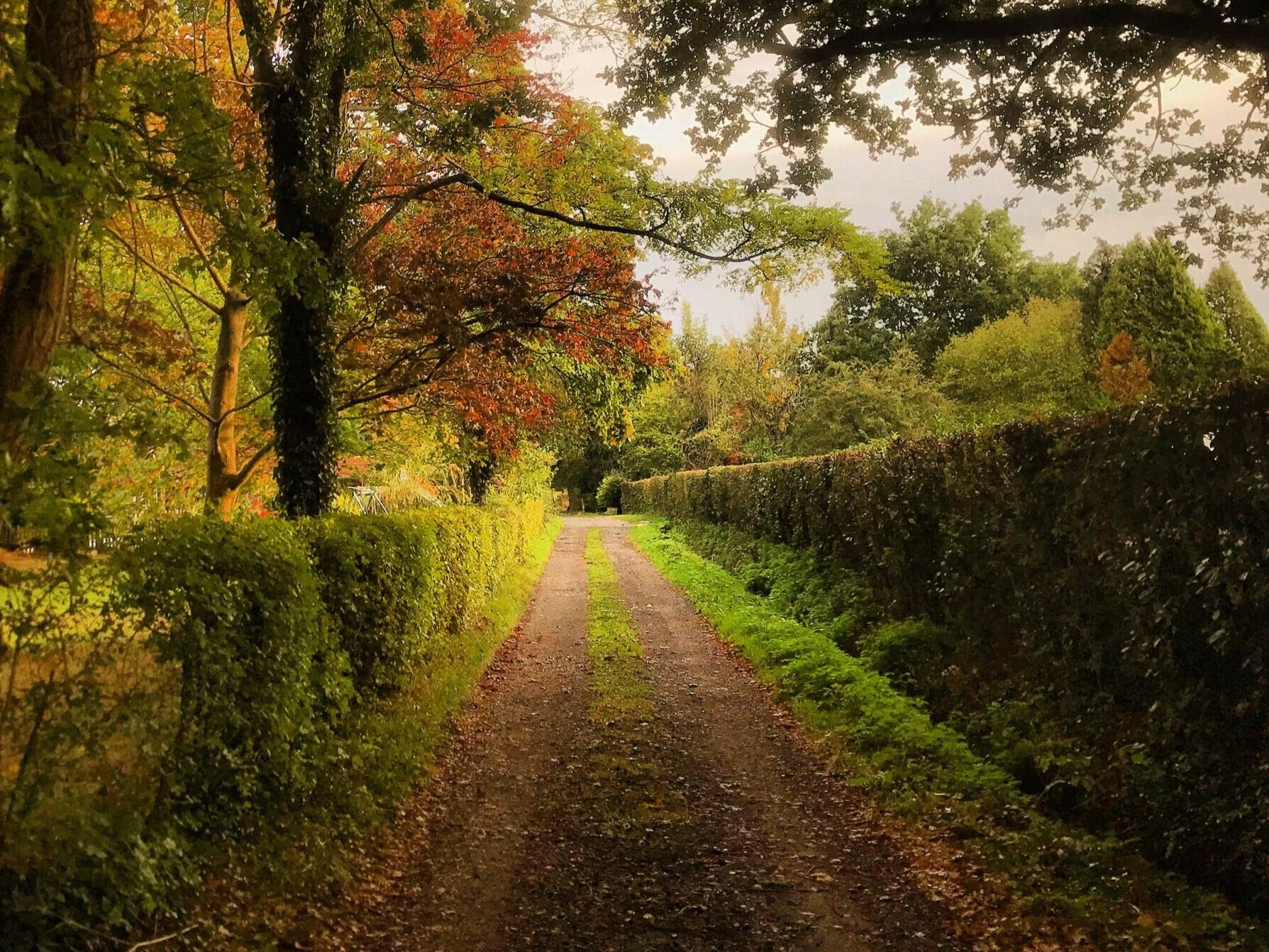
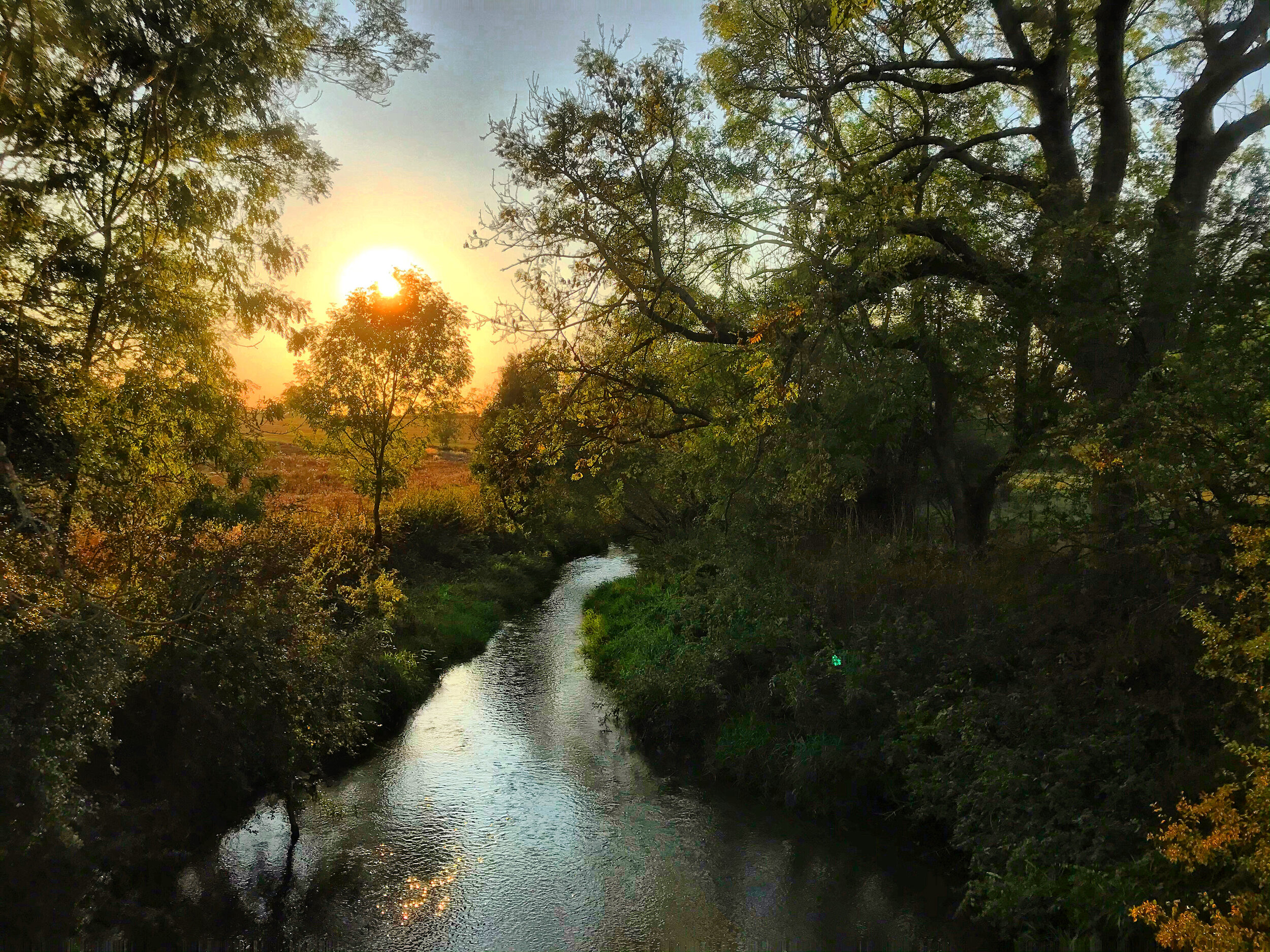
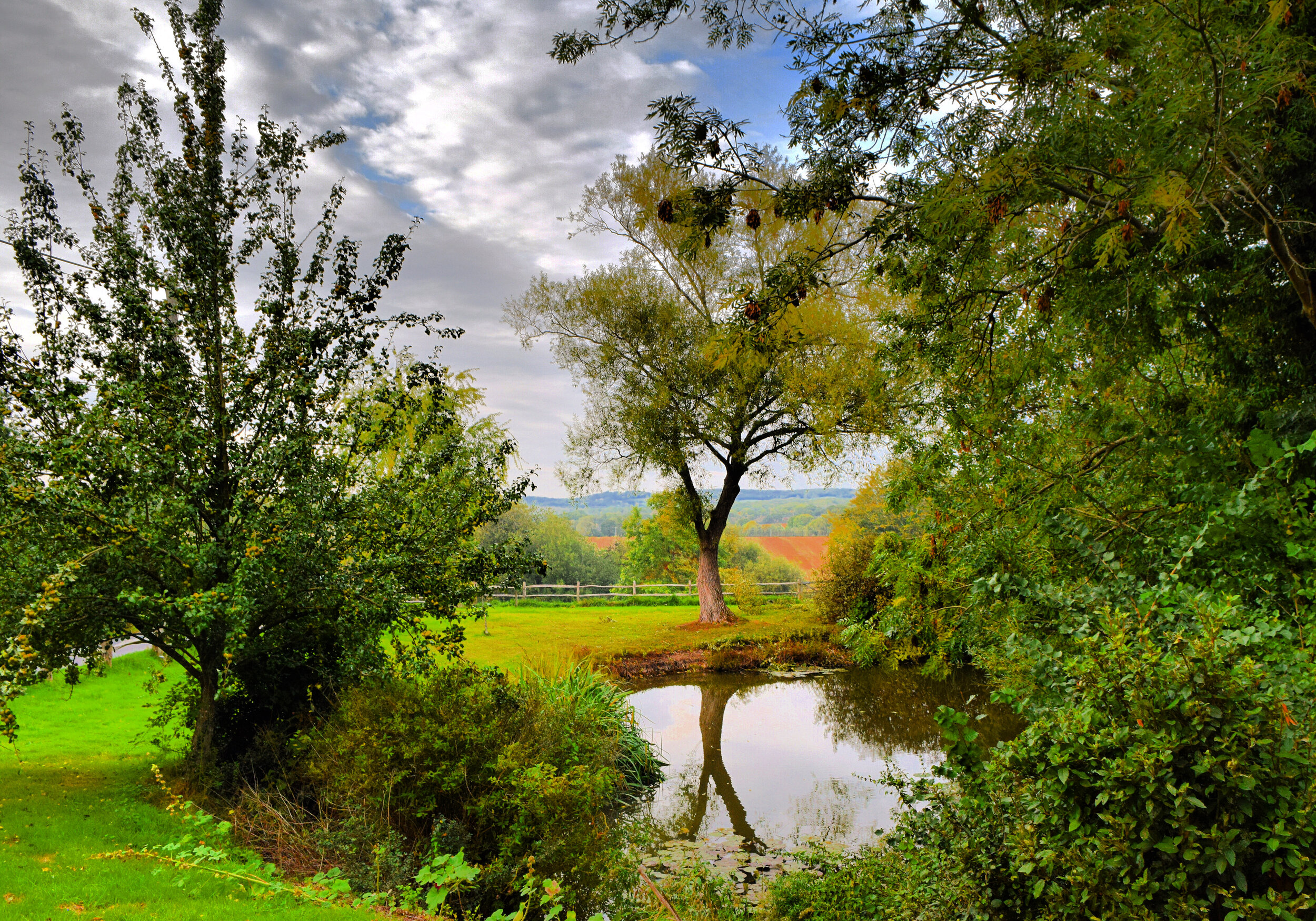
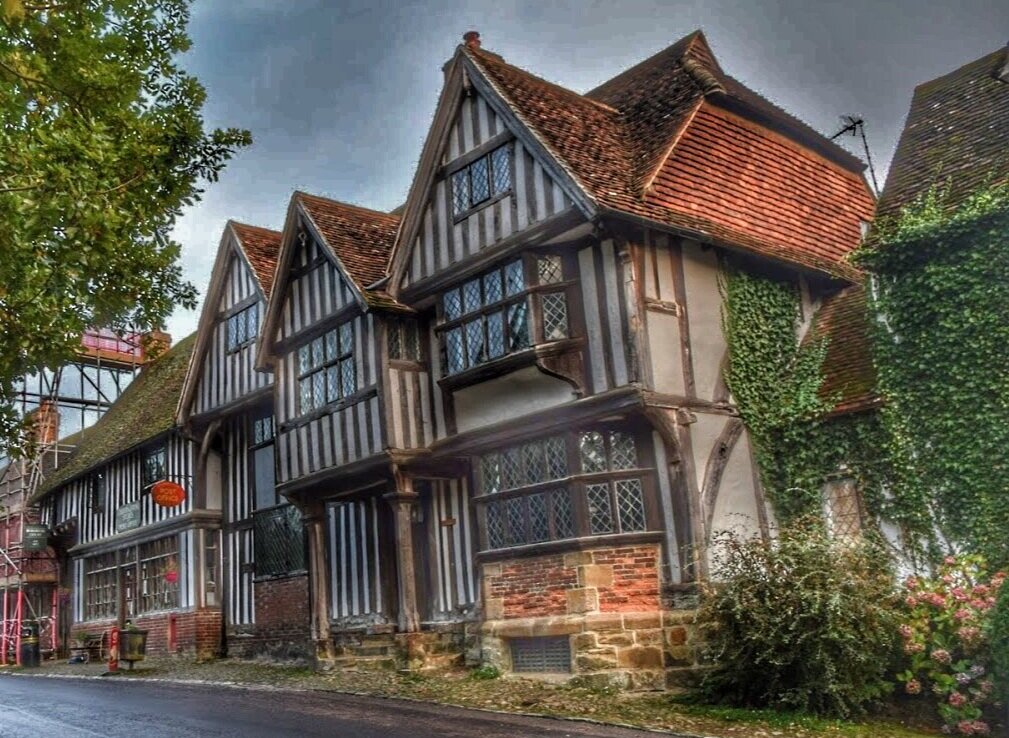

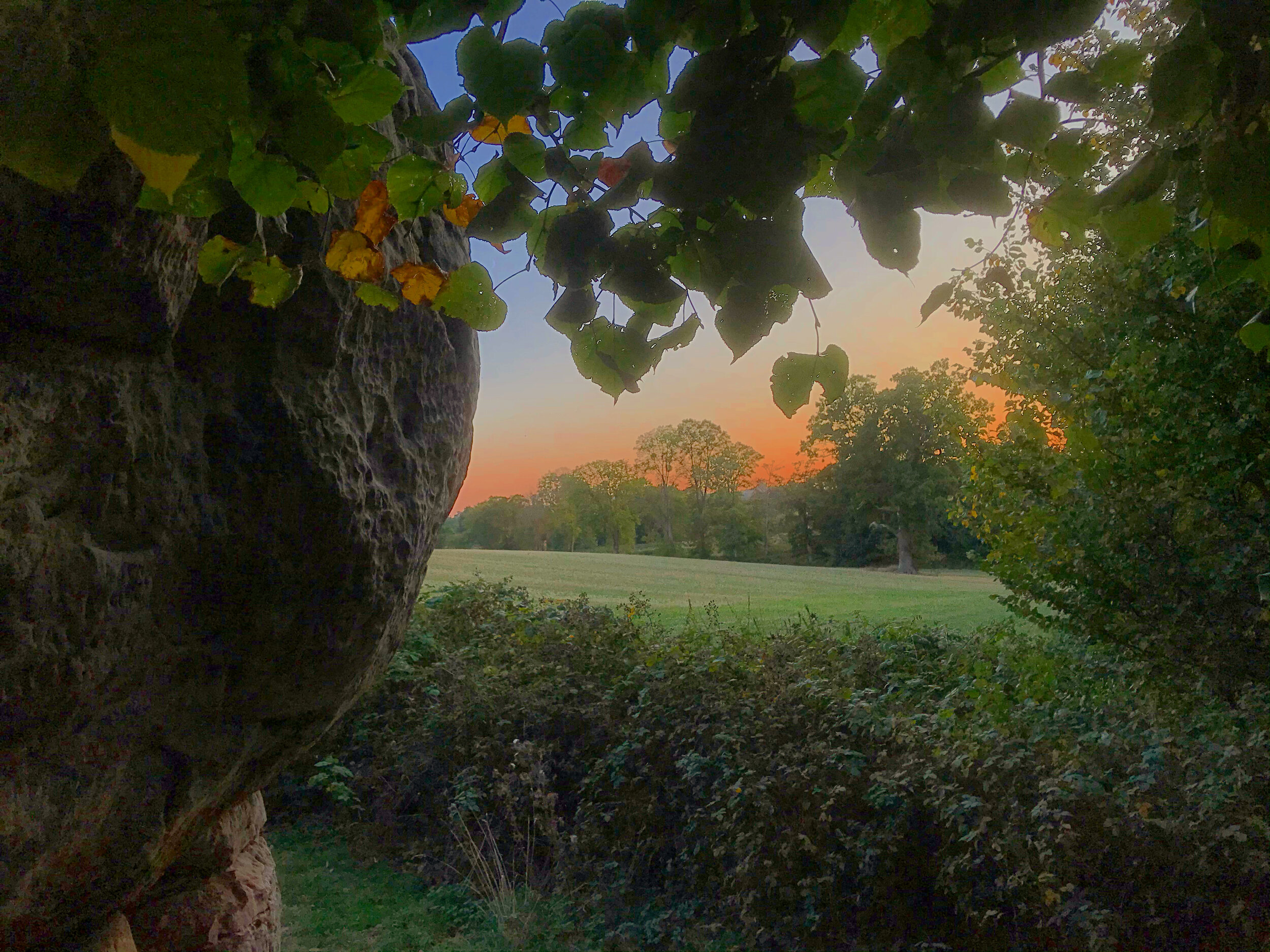
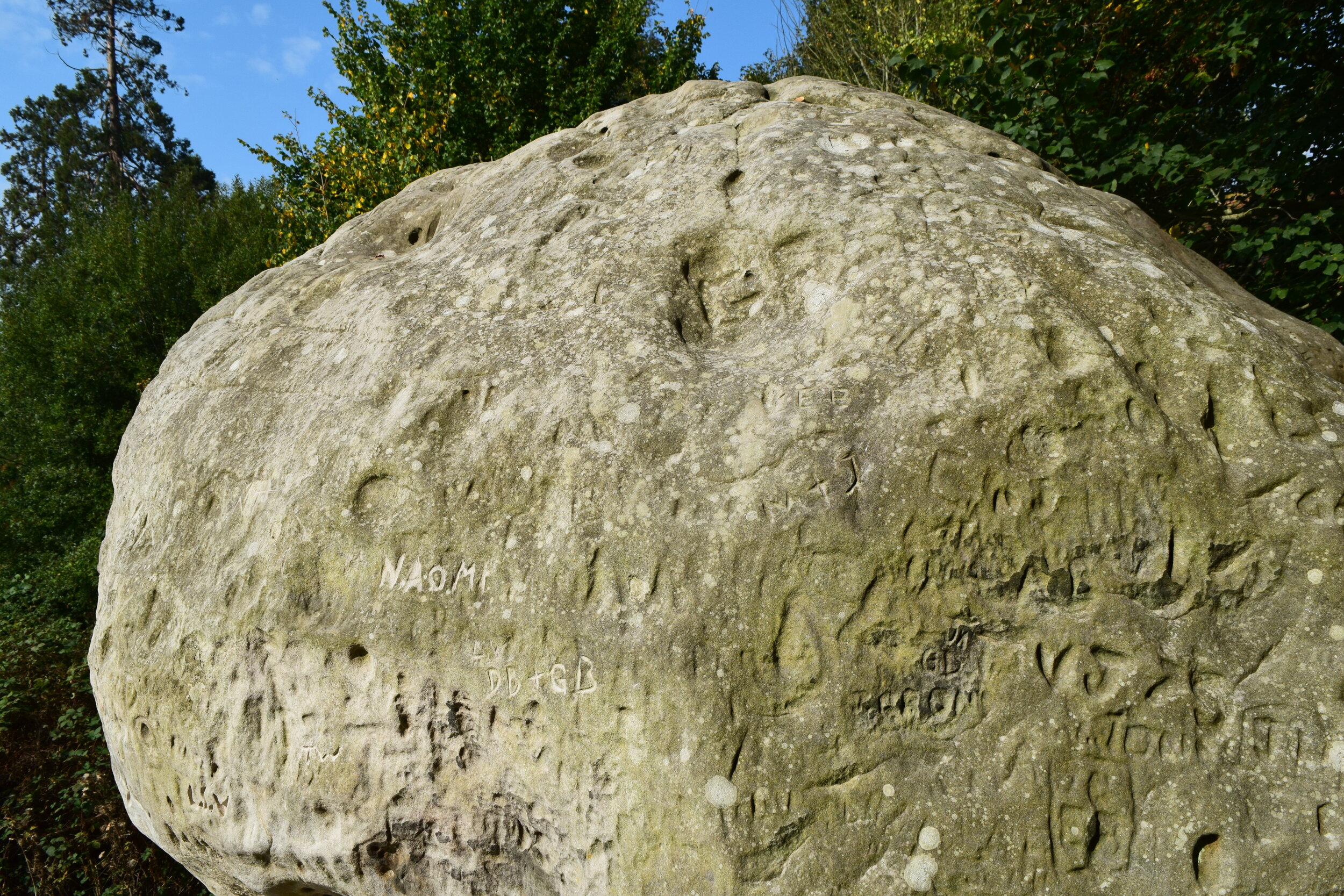
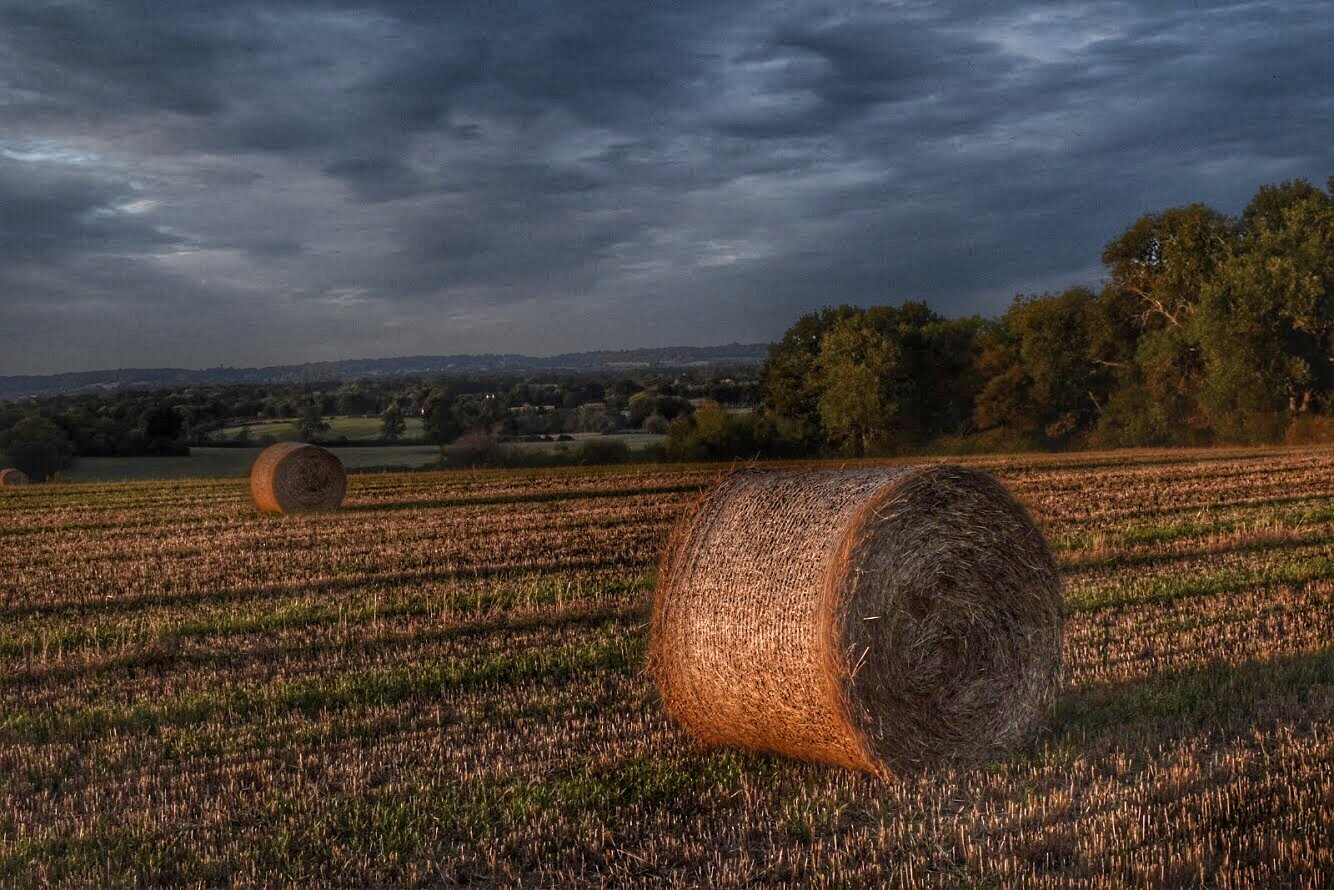

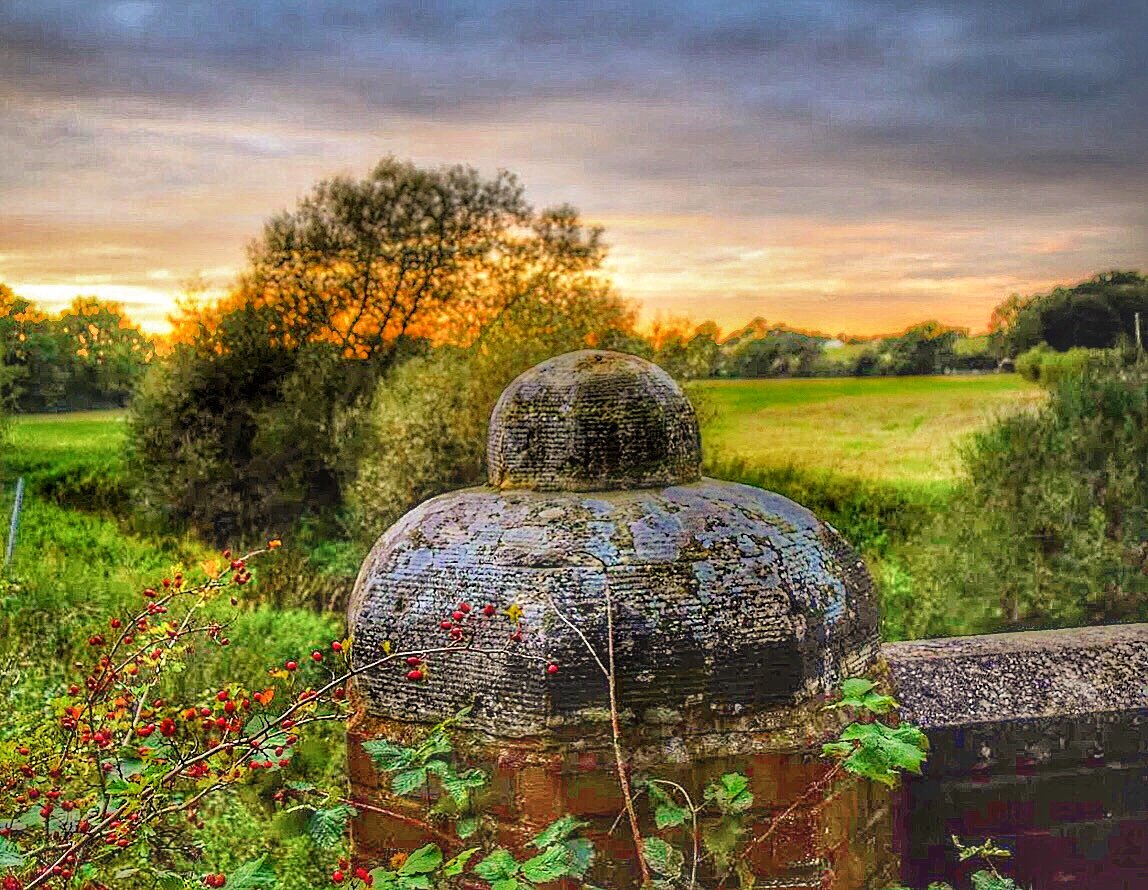
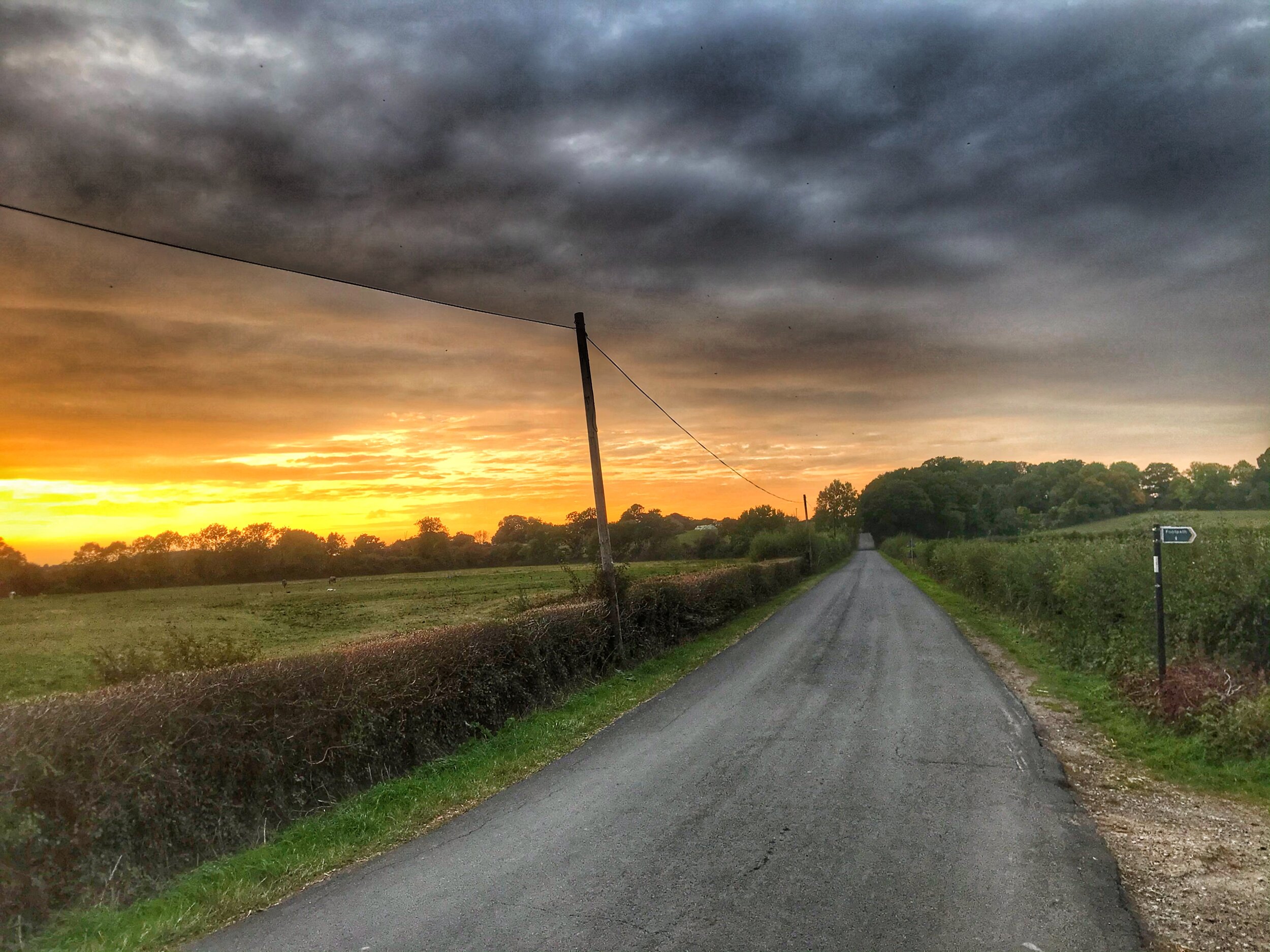
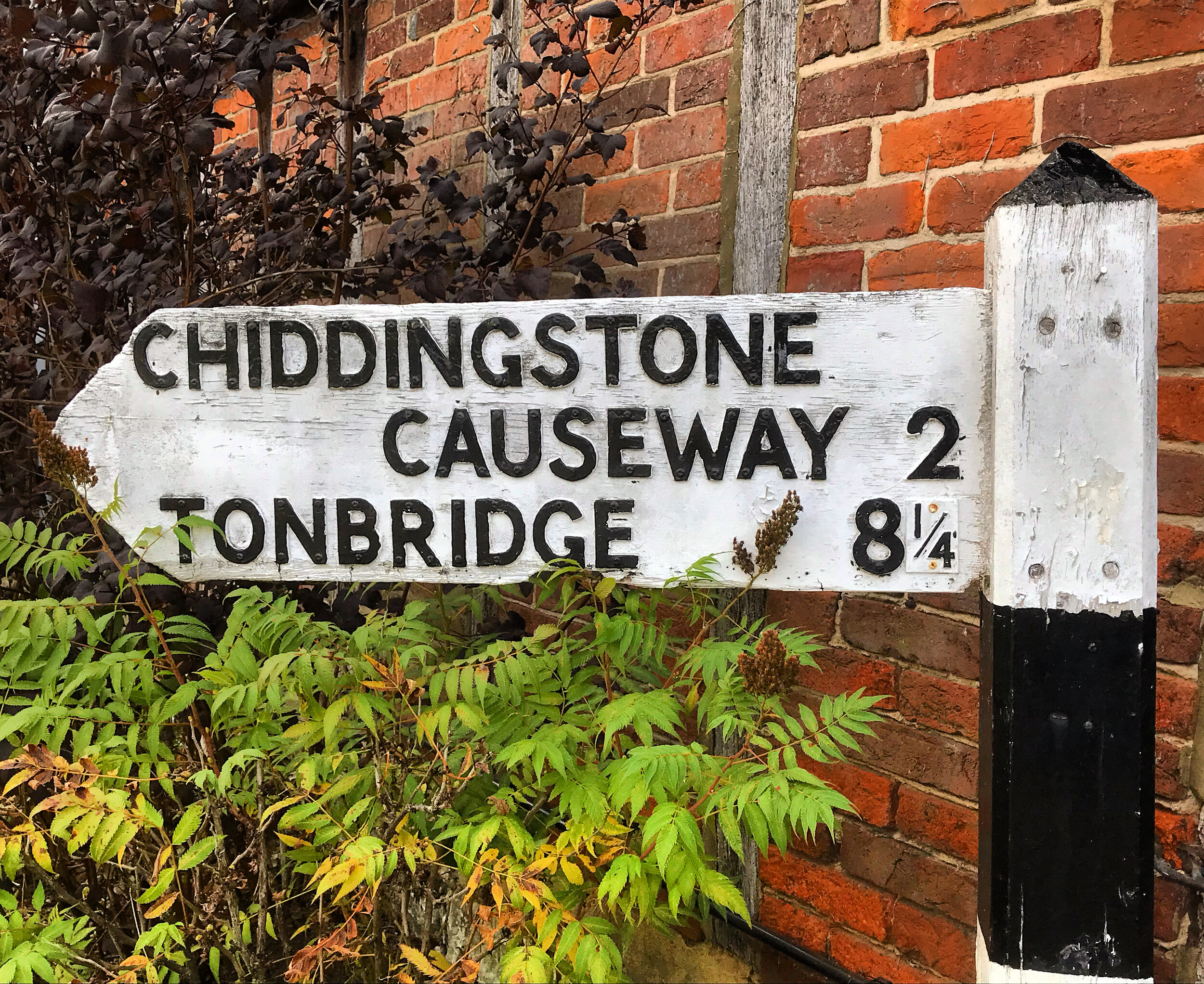
The 12th March 1999 was a defining date for me. I had just passed my driving test and with it came a new world of freedom for myself and our group of friends.
One of our gang lived out in remotest Chiddingstone so that summer we spent untold nights driving round the lanes to a soundtrack of carefully curated mixtapes. Our travels took us to distant watering holes and far flung pub gardens as a tradition of sorts was born.
Those country nights continued for many years more but without realising it, life moved on as we gradually settled down into studies, new jobs, first homes and eventually families.
It was memories of those evenings that bought me back to Chiddingstone after all these years, but this time I was on foot and the playlist was relayed via Spotify rather than a cassette tape.
Life has changed beyond recognition since then, but there some things that have not changed at all - the village is as charming as ever and the surrounding countryside still bewitches like it did on those hazy summer nights way back when.
Enjoy the walk and if you find yourself stopping for a drink, then pause to raise a glass to old friends.
The Little Brown Jug, Chiddingstone Causeway
Begin your walk at The Little Brown Jug, opposite Penshurst Station. Locals will know this area as Chiddingstone Causeway, but the station borrows its name from nearby Penshurst Place, the grand house located 2 miles up the road.
Penshurst station is currently home to the Penshurst Platform Gallery, a pop up space showcasing beautiful local art in one of the platform shelters. The project has been developed by Jessops Farm Studios, who are also taking part in Art in June, when over 50 artists from the Sevenoaks and Eden Valley area open their studios to the public for two weeks each June. You can learn more about their work and news here. If you plan to visit the studios you can find directions below.
Penshurst Platform Gallery, Penshurst Station (Pic: Sally Eldars)
Cross over the footbridge and exit the platform, then walk through the car park next to the builders yard. Look down and you will see that you are walking over some old rail tracks, remnants from the station's goods yard which closed in 1963.
Penshurst Station, Kent
Go through the small metal gate and turn right, walking along the track. You may spot the resident sheep hiding in the hedgerow here, the trees provide them shelter from both the sun and rain - particularly during lambing season. As always, make sure you keep any dogs on a lead when around livestock.
At the end of this track, walk through the large metal gate and then cross the field. When you reach the hedgerow, turn left and walk on, keeping the hedge to your right. Rose hips, blackberries and sloes mingle amongst the large oak trees, so this is a good spot to forage for Autumn berries. All of these can be used mixed together as part of a hedgerow jelly.
Sheep heading for the hedgerows…
Turn right through another metal gate, then cross this smaller field before climbing the stile into a larger field.
Follow the path beneath the trees, aiming for the opposite hedge. In the distance you will see Becketts Farm and some oast houses. As you get closer you will see a gap in the hedge guarded by a stile.
Becketts Farm, Chiddingstone
Climb over the stile and then walk on through the field, passing to the right of the oast houses. There are normally sheep here, but sometimes there are cows, horses, donkeys or even chickens enjoying the fresh air. If you don't see them you will probably hear them!
Follow round the oasts until you reach another stile, then climb over and cross the driveway. At this point turn left, walking towards the farm yard, before turning right after the tree and climbing another stile.
Becketts Farm, Chiddingstone
There are a flock of feisty geese in this field, who are not shy in voicing their disapproval at unexpected visitors. They can be quite intimidating, but walk on with confidence and they will ignore you!
Continue straight on leaving the farm yard behind, to your left you will be treated to a view of the rolling hills and woodlands that are characteristic of this part of the Weald.
Looking across the Weald…
Walk downhill and pass through the large gate into the next sheep field. This section gets very muddy, even after just a small amount of rain, so it's best to plan ahead with suitable footwear.
Follow the path diagonally across the field, then when you reach the hedge on your right, continue straight on aiming for the large metal gate. To the left of this there is a ramshackle stile. Climb over with care and then turn left up Hampkins Hill Road.
A muddy section of the walk
Walk along the lane with care for 85 metres until you come to a track on your right.
Turn right and continue along the track, passing Chested House and a beautiful old Shepherds hut. Just before the end of the track you will come to a stile, climb over this and then turn right, walking past Fissenden house. You may be surprised to discover that this pretty cottage was once a square oast house, before being converted to a residential property in the 1920's.
Fissenden House, Chiddingstone
When you reach the corner of this field climb the stile and continue straight on. Sometimes there is a herd of jersey cows in this field, they are very docile, but make sure you remember to keep dogs on a lead.
Continue uphill through the next field, this time with the tree line on your left. The gnarly hawthorns wrap themselves round the oaks, forming a holey hedge. There are plenty more sloe berries here, should you wish to top up your foraging basket.
Chested Farm, Chiddingstone
Once you come to the top left hand corner of the field, climb the stile and turn left down the gravelly track.
Walk past North Farm and then carry on downhill past Keepers cottage and rectory cottage. Two lovely houses that form part of the remote hamlet of Somerden Green.
As you walk on you will come to a row of beautiful old cottages on your left. These were originally built as a single house, but at the time it was no mansion, this was one of the oldest poorhouses in the country.
Somerden Green, near Chiddingstone
Somerden Green workhouse was built in 1601, the same year that the Poor Relief Act was introduced. The new laws were bought in as an attempt to tackle the rising problem of poverty in England that had been steadily worsening throughout Queen Elizabeth's reign.
Traditionally the poor could fall back on the church for support, taking shelter in the monasteries, priories and convents that could be found all over the country (including Tonbridge). When Henry VIII ordered the closure of these, the poor were left poorer and the needy needier.
The ' Elizabethan poor law' looked to consolidate a succession of previous laws that had been introduced to tackle this problem whilst also trying to attempt a more balanced approach to resolving the situation. The new law required each parish to collect a local tax which would provide housing for the poor, as well as supplying materials such as wool and flax to be used to provide work for able adults and children.
Somerden Green cottages, a former work house.
The elderly and infirm would be cared for by the parish in 'poor houses', whereas the younger and supposedly fitter impoverished would be put to task in the workhouse. Built to serve the nearby village of Chiddingstone, the house here would have fulfilled both roles. It built using contributions of bricks, and timber from the parishioners, not to mention a hefty tax contribution, based on how much they could be deemed to afford to pay.
In 1662 a further law was passed, heaping further oppression on the poor. The settlement act dictated that any new arrivals into an area could be returned to their home parish if they did not meet stringent conditions. The law was introduced to stop economic migrants descending on wealthier parishes with higher tax paying residents.
Settlers would need to prove that they could pay enough tax for their stay in a parish or be married to an existing resident. If a newcomer gave any inkling that they would not be able to support themselves then they would be sent packing. New arrivals could gain residence in the parish if they had worked there for a year, but this then led to workers being given shortened contracts - typically of 364 days. For many rural workers, the reality was that they would never be able to afford to risk leaving their home parish for fear of being left stranded between communities.
The settlement act was not revoked until 1834, but the sweeping changes which replaced it were no harsher. The wealthier classes had become increasingly resentful of paying for the poor, so the new laws aimed to reduce the expenditure on welfare and make the system as unappealing as possible.
Workhouse cottages, constructed 1601 under the ‘poor law’
Individual parishes were encouraged to form unions and financial support was to only be given to those employed in work houses. Chiddingstone came under the Penshurst union along with Edenbridge, Hever, Cowden and Leigh. A new larger workhouse was constructed at Bough Beech, but within 2 years the union had been absorbed by Sevenoaks.
Life in the workhouse was grim. Husbands and wife’s would be separated, as would children from their parents. Younger residents would be four to a bed and even the men would need to find a way of sharing 11 beds between 21. Sharing a bed with your workmates doesn't sound pleasant at all, but even less so when you are washing outside in cold water!
It's difficult to sum up how horrible this would have been in one paragraph but you can read more about life in the Sevenoaks workhouse here or Tonbridge (Pembury) here.
The causeway at Somerden Green
Although conditions gradually improved, workhouses were not officially abolished until 1930. This remains a grey area as many continued to operate under the guise of Public assistance institutions until the introduction of the NHS in 1948. The institutions kept the same staff and routines, so in reality little had changed.
The Tonbridge Union workhouse became Pembury hospital in 1938. The old buildings continued to serve as a maternity hospital until 2011, so if like me you are from the local area, then you may have been born in a workhouse too! You can view some images and read more about the Tonbridge Union here.
Footbridge over the River Eden
After the poor house, the track becomes a path once more. Follow this under the oaks and between the hedgerows. You may notice that you are walking on a causeway, a raised path to provide safe passage to the village when the surrounding fields flood. This would have been vital in the pre-car era.
Continue along the causeway and after a short distance you will come to a wooden bridge crossing the River Eden. Hidden in the undergrowth to your left you will see an old pill box guarding the bridge. These WW2 relics formed part of a defensive line that was built to protect against the threat of invasion from Hitler. If you have walked the Pillbox Safari or are a fellow pillbox appreciator then you may remember that Tonbridge sat on a line that ran from Newhaven to Hoo in Kent. This particular box sits on a line running from Penshurst to Reading.
The River Eden
Follow this path alongside the field, then as it meets the woods, turn right and cross through the long grass.
Continue through the trees and then walk on with more trees to your left. Look to your right and you will just be able to make out the little village of Ide Hill perched up on the ridge. If you've ever enjoyed a walk around Emmets Garden then you will know the view is even more spectacular when looking back down!
A view across to Ide Hill and The Greensand Ridge
Follow the path past a pond and then continue until you reach the road. At this point turn left before walking carefully up the road and over the bridge as you cross an attractive fishing lake belonging to Chiddingstone Castle.
Continue uphill and the ridiculously picturesque village of Chiddingstone awaits. This ancient settlement can trace its history back over 1000 years to the Domesday book and beyond, but nearly all the buildings you see today are perfectly preserved from Tudor times.
Chiddingstone Castle, fishing lake
Your first glimpse of this charming cobbled high street will be the Castle Inn. This 600 year old pub provides a warm welcome to humans and dogs. It also serves up tasty pub meals and of course Larkins, the traditional Kentish ale, brewed literally just up the road. You can check their menus here.
To the right of the pub you will see a gateway leading to Chiddingstone Castle, the neighbouring mansion built by the Streatfeild family.
The Castle Inn, Chiddingstone
The family connection with the village is as least as old as the timber gabled houses that stand today, if not older. The earliest recorded Streatfeild in Chiddingstone is Robert, an ironmaster who was born in 1514. Whilst he was slaving over a hot forge, establishing the family iron business, a certain King Henry would have been courting his second wife Ann Boleyn, just a few miles away at Hever Castle.
By the time that Robert's grandson Richard had taken over the family business, the Streatfeilds owned forges and furnaces in both Kent and Sussex. The iron industry was proving to be very profitable and the coffers being stoked further by England's war with the Spanish. The need for cannons and other armoury meant there was plenty of demand.
Chiddingstone High Street
The local boy had done well, but went on to consolidate his family's fortunes further by buying the manor of nearby Cowden from Lord Thomas Burgh, a local aristocrat that had fallen on hard times. As his financial problems mounted Lord Burgh mortgaged the manor of Chiddingstone to the Streatfield family, before eventually signing this over after failing to repay the debt secured against the land.
For many years the Streatfeilds occupied the original manor house which had once sat on the village high street, it was aptly called High Street House. This remained the family home until 1760 when Richard's great, great Grandson Henry instigated a beautiful act of vandalism that saw the death of High Street House and the birth of Chiddingstone Castle. The Tudor property was torn down and rebuilt as a substantial mansion, which was later embellished with gothic turrets and parapets.
The Streatfeild vault, St Marys church yard
Seeking privacy, or perhaps just a bigger garden, Henry also had the neighbouring house demolished and then arranged for a wall to be built, cutting the high street short at the Castle Inn. The through road was diverted away from the house and the newly constructed mansion was hidden away behind locked gates.
Having transformed the village and the castle the Streatfield family moved out in 1910, downsizing to nearby Hoath House. A succession of residents followed, including the Astor family (who also bought Hever Castle), the army (during WW2) and a school. However it's Denys Eyre Bower, the castle's final owner that makes for the most engrossing read. Denys story is as exotic and and eclectic as the antique curiosities he dedicated his life to collecting.
Chiddingstone Castle, Chiddingstone
Born in 1905, Denys' upbringing was fairly normal, he lived in a small village in Derbyshire. His family were certainly comfortable but lived a life a world apart from Chiddingstone and the Streatfeilds. His dad worked on the old Midland Railway, of which his grandfather was a director.
Inspired by his father's hobby collecting Chinese porcelain and other East Asian treasures, Denys began his own collection at the age of 5, starting with stamps and coins, but by the time he left school at 17, his collection had evolved and he was now focusing on Buddhist artefacts, Egyptian antiques, Japanese swords and objects from the Jacobite period.
Despite an obvious talent for scouting down rare and unusual antiques, Denys left school at the age of 17 to work as a bank clerk for Midland Bank (now part of HSBC) where he spent the next 20 years. Banking paid the bills but it couldn't compete with his passion for collecting and he found himself juggling the demands of his career and his hobby. eBay was still light years away, and auctions were all done in person, occasionally resulting in him taking a duvet day to ensure that he could snare a deal.
Crossing the lake in the castle grounds
At the age of 38, Denys married and moved to London where he finally began to realise his true calling, running an antique shop on Baker Street specialising in Japanese and East Asian antiques. The shop was a game changer for his collection - a steady stream of rarities meant that he could pick and choose the objects he wanted to keep and then sell on those he wished to sell at a profit. Over the next 12 years he amassed an incredible selection of treasures, but when the lease on the shop ended he was forced to re-evaluate the life he had made for himself in London.
Taking the plunge he took out a bank loan and bought Chiddingstone Castle in 1955. This grand old mansion gave him a fresh start and provided his hoard the space it needed to breathe. With his collection proudly on display Denys opened the castle doors to the public the following Spring, attracting curious tourists and arts enthusiasts alike.
Around the time of the castle opening Denys met and fell in love with the Countess of D'Estanville, a mysterious young lady from Monaco that somehow found herself widowed and living in Peckham with a young son. Denys was smitten with his 22 year old girlfriend and after a brief romance he proposed. The Countess accepted and the pair were engaged for a year, until the young lady suddenly ended their relationship due to a 'disparity in ages'.
Denys was heartbroken and in a bid to win her back he paid a visit to her house at Gellatly Road, however at the time he happened to be carrying an antique revolver with him. Nobody can be entirely sure what happened next but neighbours reported hearing two shots, the first shot struck the countess and the second was Denys turning the gun on himself. The story doesn't end here though...
The orangery at Chiddingstone Castle
When Denys woke up in hosiptal, he was arrested and hauled before the courts - charged with attempted murder and attempted suicide. The first bullet had narrowly missed his former fiancé's heart and the second had failed to kill him. As the court case unfolded, so did some awkward home truths. The Countess D'Estanville was actually called Anna White, and was a bus driver's daughter born in Camberwell, rather than the daughter of a Marquis from Monaco. The defence argued that Bowyer had merely intended to show White the weapon when it had discharged itself accidently whilst removing it from his pocket. Fearing he had accidentally killed his ex, Bowyer turned the gun on himself. The defence also argued that as a Buddhist Denys would never have intentionally hurt anybody.
The judge and jury did not buy this clumsy argument though and Denys was sentenced to life imprisonment, swapping the splendours of Chiddingstone Castle for Wormwood Scrubs. Whilst he served his sentence, the loan he had taken out to pay for Chiddingstone began to accumulate. His bank began to sweat as the possibility of recouping the money looked less and less likely.
The bank recruited Ruth Eldridge, a solicitor, to investigate. Upon visiting Chiddingstone with her sister Mary they realised that the dusty old castle was a treasure trove of antiques that was worth 6 times the value of the loan that Denys had secured against the house. Ruth took on Denys case and along with her sister she set about restoring the castle.
Upon meeting Denys, Ruth suspected a miscarriage of justice and began putting together the proper defence that Denys had been cheated of by the ineptitude of his original solicitor. An appeal was made to the Lord Chancellor and proved to be successful. After 5 years locked up Denys was a free man.
Denys Eyre Bower in 1956 (Pic: Chiddingstone Castle)
The castle doors opened once more and with the help of the two Eldridge sisters and some wheeling and dealing of his own, the trio managed to keep the old house running for another 15 years until he died in 1977. Upon his death the sisters formed a charitable trust that keeps the house open to visitors to this day. If you would like to learn more about Denys or see his magnificent collection for yourself then it is well worth a visit. You can check opening hours and find out more about here.
If you don't have time to explore the castle itself, then make sure you at least visit the gardens. These are open every day of the year and for a small donation payable by honesty box, walkers can explore the landscaped grounds surrounding the house. In Spring the main lawn will be smothered in a carpet of bright yellow daffodils and in Autumn the woodland trails come into their own, as the colours begin to turn. You can picnic by the tranquil lake or in season there is a tea room tucked away within the castle courtyard.
Exiting via the High Street gate
Having explored the castle, exit via the high street gate and continue through the village as you walk along the old cobbled pavements. With the exception of the school, the castle and the church, the village centre, including the pub, is owned by the National Trust. They took possession in 1939 with the aid of a generous donation from John Arthur Fallows of Bournemouth. The trust's ownership has meant that the high street has been so immaculately preserved, that at times it can feel like you have stumbled onto the set of a period drama.
One of the highlights is the village store. Built in 1453 it claims to be one of the oldest working shops in the country and from the outside this is easy to believe. The building was once owned by Thomas Boleyn (father to Anne)
Chiddingstone Stores, the oldest working shop in England
Behind the leaded windows and timber clad exterior awaits an Aladdin's cave of gifts, toys and every day essentials. The jars of sweets, sitting above the counter will transport the more seasoned walkers back to their youth, but the two iron pillars supporting the middle of the shop will blast you back even further. These were formed from two cannons, possibly produced by the Streatfeild forgery all those years ago.
Tucked away in a courtyard behind the village stores you will find the Tulip Tree café. This splendid tea room serves breakfast, lunch and an afternoon tea, so all bases are covered whatever time of day you are walking. You can view the website for the shop and café here.
Burghese Court, home to the Tulip Tree café
As you pass St Marys, the village church, you will see an unusual structure in the graveyard. The mausoleum is another Streatfeild legacy and dates back to 1736 when it was built by Henry (who also built the castle) as an entrance to the family vault. Many generations of Streatfeilds are commemorated elsewhere in the church, including a plaque for Richard - made from cast iron of course!
Walk on past the village school and to your right you will see a sign directing you to the Chiding stone. This is a little detour off the route, but is well worth the extra steps to this mysterious rock formation that dates back over 135 million years.
The Chiding Stone - ancient boundary marker and seat of justice
Whilst Iguanodons were wading in the swamp that once covered the Weald, layers of sand were building up creating the sandstone beds that exist across Kent and Sussex. Over time the ice age and the elements shaped these, leaving rocky outcrops (like the High Rocks) and unusual boulders such as this one.
No one really knows how the stone has been used over the years but there are plenty of rumours, guesses and legends. Some argue that it could have been used by ancient druids as an altar or a seat of judgement. Although others point to the Saxons, suggesting that it could have been used as an early boundary marker by a tribe leader called Chidda or Cidda - hence Chidda’s stone.
In the dark ages it's believed that the villagers would gather round the stone to scold witches, gossips and nagging wives. The offenders would be 'chided' by the local community as punishment, hence the 'Chiding Stone'. Society tends to voice its disdain on social media these days, but if you wish to do things the old fashioned way, then this peculiar stone is the place!
Sniffing out the mysteries of the stone
Walk the short distance back to the main road and then turn right, following the road with care for approximately 400 metres. As you leave the village behind, walk uphill past an extension of the church graveyard. The gateways into the neighbouring fields offer spellbinding views.
At the end of the road you will come to a triangle of Oast houses forming an island where three roads join. To the left of this island is Larkins farm, home to Larkins brewery. Like much of Kent, hops were grown here for hundreds of years, but as tastes changed and demand fell, the hop garden became overgrown and forgotten. When the brewery moved here in 1990 they set about replanting the garden and hops began to flourish once more. The brewery harvests over a tonne of hops each year, all picked by locals, friends and family. You can view a brilliant time lapse of the harvest here.
Triangle Oast, Chiddingstone
Take the road to the right of Triangle Oast and then as you start to walk downhill, turn left after the pond and follow the path over Hampkin Hill. The view here is magnificent and uninterrupted. You can see right the way across the Eden Valley and on a clear day you can make out Toys Hill up on the Greensand Ridge.
At the end of the path turn left, walking downhill into the right hand corner of the field. Continue into the woods and you emerge onto a driveway. Turn left and continue until you meet the road at Vexour bridge.
Hampkin Hill, Chiddingstone
The bridge takes its name from nearby Vexour farm. The current owners, the Boomar family, specialise in breeding pedigree cattle and sheep, alongside arable farming. They made headlines in October 2012 when their pedigree bull Vexour Garth sold for a record breaking 100,000 guineas at auction. A guinea is equivalent to £1.05 pence, valuing Garth at £105,000. Livestock auctions are priced this way so that the seller can take £1 from the sale and the auctioneer can take its 5% commission.
After his sale, Garth continued to live at Vexour where he is cared for on behalf of his new owner. Weighing in at over a tonne, measuring ten foot long and with 45 cm diameter testicles, he's a very big boy. His unusually large dimensions and his own father's pedigree, meant that he was the perfect choice for breeding. Breeders from around the world would pay £100 + VAT for a straw of Garth's prized produce. The bull could produce up to 8000 straws of semen a month, but in order to maintain the quality, his owners requested that this is only collected three months a year.
Vexour Bridge, Chiddingstone
The farm hasn't made so many headlines since Garth, but they continue to have success with their breeds whilst maintaining a commitment to animal welfare and environmental conservation. You can read more about Vexour here.
Cross the bridge with care and then turn right, climbing over the stile. Take the left hand path, aiming between the two hedges. Once you draw level with these, continue straight on to the next hedge- you will see a pillbox up on the hill to your left.
Following the path between the hedges
When you reach the footpath markers at the end of the hedge, turn right and follow the path over a wooden footbridge leading into another sheep field. Cross the bridge and continue with the hedge to your right.
As you pass the hedge, turn right, walking to the end of the field where you will reach a stile. Climb over and then turn left, following the path alongside the hedge until you reach another stile.
Climb this stile and then turn right, where you will come to another stile. Climb over, walk across the short field before turning left at the gate. Continue back along the hedgerow and then turn right and walk across the arable field and through the large metal gate.
Crossing the arable field
Walk through the large metal gate then turn right, following the path under the trees as you retrace your steps from the start of the walk. At the end of the field climb the stile and then walk across the short field before turning left at the gate.
Continue back along the hedgerow and then turn right and walk across the field and through the large metal gate. Then continue back along the track through the sheep field until you reach the small metal gate. Cross the car park/yard and then walk over the footbridge at Penshurst station, ending your walk.
The Little Brown Jug, Chiddingstone Causeway
If travelling back to Tonbridge by train you will leave from platform 2, if travelling to Edenbridge or London then you will need platform 1.
Either way you may want to factor in time to finish your walk with a meal or drink at the Little Brown jug. This is another lovely country pub, serving tasty pub classics along with great service. The pub is renowned for its award winning fish and chips!
Art In June will be at Jessops Farm Studios between 04-20 June. If you wish to visit the studios then please use the directions below. Please check their opening hours on the event website before beginning your walk.
Acknowledgements
In memory of my dear old friend Giles who introduced me to the joys of Larkins and The Castle Inn all those years ago. Your friendship and wisdom is still sorely missed.












